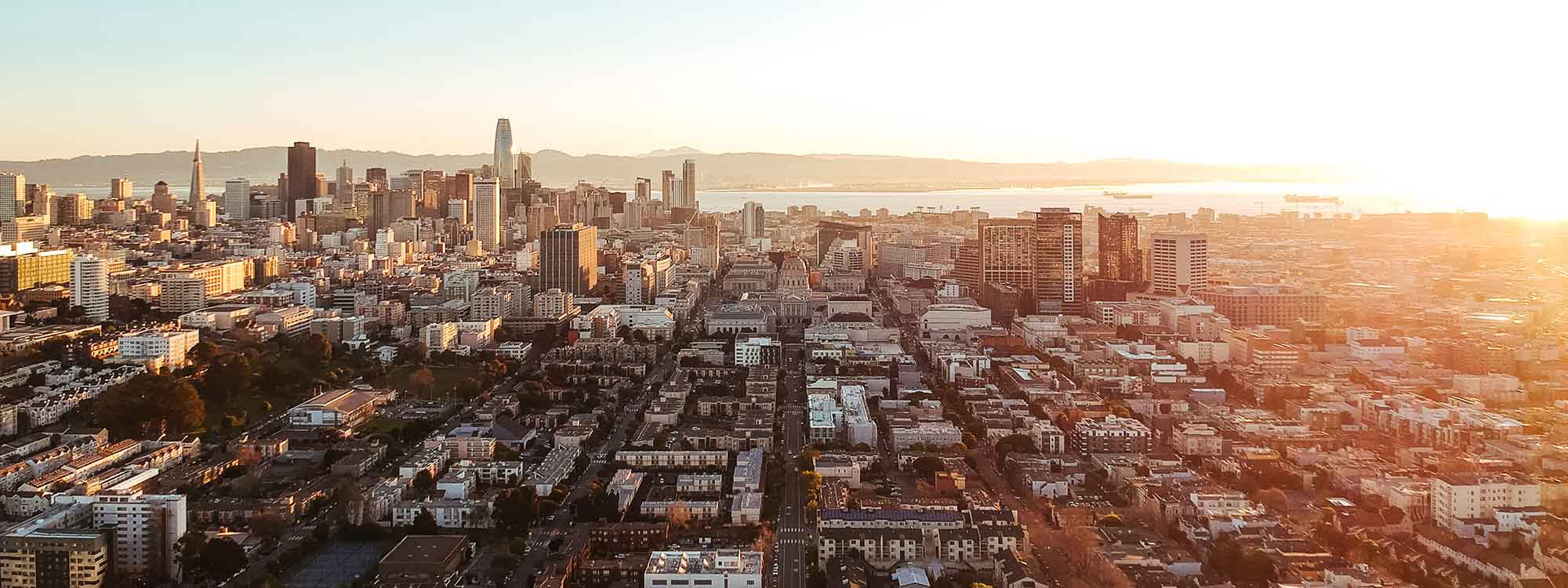After 2 years of research and outreach through the Horizon Initiative, the Metropolitan Transportation Commission (MTC) has released the Draft Blueprint which serves as the “first draft” of Plan Bay Area 2050, our region’s blueprint for growth. The Blueprint weaves together strategies from the extensive research and outreach effort undertaken over the last few years to advance critical climate and equity goals. Greenbelt Alliance has been a leading advocate for a visionary Plan Bay Area since its inception.
As part of the Blueprint Phase of the Plan Bay Area Process, MTC has released 25 bold strategies to create a more resilient future for the Bay Area related to housing, transportation, the economy, and the environment. With infrastructure investments in walking, biking, and public transportation—as well as critical sea level protections designed to keep many Bay Area communities from flooding through 2050—the Draft Blueprint makes meaningful steps towards the adopted Plan Bay Area 2050 Vision.
Five Key Challenges
Building on the 25 strategies listed in the Draft Blueprint, MTC is looking for feedback and advice on 5 key challenge areas:
- Affordable housing
- Traffic congestion & transit crowding
- Displacement
- Emissions Reduction
- Jobs-housing imbalances
Here’s an example of what they’re looking for: the Draft Blueprint strategies result in a drop in CO2 emission levels per capita in 2035 (9% below 2005 levels), but are insufficient to curb them to state-mandated levels (19% below 2005 levels). Even with anticipated post-pandemic increased work-from-home policies, CO2 emission levels are forecasted to increase between 2035 and 2050, primarily due to assumed adoption of driverless vehicles that can potentially generate “zero occupant” mileage. MTC is looking for suggestions for how to meet greenhouse gas reduction goals.
On the Positive Side
Despite these challenges, the Draft Blueprint has some great, forward-looking policies we’d like to highlight:
Big Win for Urban Growth Boundaries
We’re pleased to see that the plan reflects the consensus around the region that growth should happen within existing cities and towns, leaving our hillsides, working farms, and open spaces to provide the many benefits of natural infrastructure. Plan Bay Area maintains urban growth boundaries around cities, and other existing environmental protections, to focus new growth within areas of existing development, close to transportation, services, and jobs to improve environmental impacts and quality of life.
Housing Strategies
Given the COVID-19 crisis, it is more important now than ever before to make sure everyone has a safe place to live. Plan Bay Area 2050 seeks to reduce barriers to housing near transit and in areas of high opportunity. Healthy places where people can walk and bike; communities with parks, shops, transportation options; homes that are affordable. All while defending the Bay Area’s natural and agricultural landscapes from sprawl development. Other strategies include reducing parking requirements, project review times, and impact fees for new housing in Transit-Rich and High-Resource Areas while providing projects that exceed inclusionary zoning minimums even greater benefits.
Adapting to Sea Level Rise
In the decade since the initial Plan Bay Area process commenced, we have a greater and more urgent understanding of the threats to our region due to climate change. We appreciate the increased focus on climate adaptation in Plan Bay Area—we need to act now to reduce our future risk. Plan Bay Area 2050 lays out a pathway to protect 98 percent of all Bay Area households that would be affected by two feet of sea level rise as well as major highways and roads.
Climate Resilient Buildings
Plan Bay Area 2050 seeks to adopt new building ordinances and incentivizes retrofits to bring existing buildings up to higher seismic, wildfire, water, and energy standards, providing means-based subsidies to offset impacts.
Next Steps
In order to create a more resilient future and pave the way for economic recovery post-COVID-19, we need to include more robust strategies around resilience. We cannot plan for the housing and jobs increase needed in our region without making sure our existing and future communities are safe from fires, earthquakes, and flooding. It is not enough to only protect shoreline communities from sea level rise, prioritizing “areas of low costs and high benefits and providing additional support to vulnerable populations.”
MTC is looking for feedback on the Final Blueprint strategies to inform further analysis. This is your chance to make sure our region is more equitable and resilient. Over the next month MTC will be hosting a series of digital workshops by region that you can attend to make your voice heard.
Now is your chance to provide input to help make the Bay Area more resilient! If you believe in creating a climate-resilient, inclusive Bay Area, sign up for one of the following workshops below:
- Alameda: Monday, July 27, 5:30 to 7:30 p.m.
- Contra Costa: Monday, July 20, 6:00 to 8:00 p.m.
- Marin: Saturday, July 18, 10:00 a.m. to 12:00 p.m.
- Napa: Wednesday, July 15, 5:30 to 7:30 p.m.
- San Francisco: Wednesday, July 29, 5:30 to 7:30 p.m.
- San Mateo: Wednesday, July 22, 5:30 to 7:30 p.m.
- Santa Clara: Wednesday, August 5, 11:30 a.m. to 1:30 p.m.
- Solano: Thursday, July 30, 5:30 to 7:30 p.m.
- Sonoma: Wednesday, August 5, 5:30 to 7:30 p.m.
For questions about the Plan Bay Area process, please contact Director of Special Projects, Zoe Siegel.
Photo: Robert Bye via Unsplash





